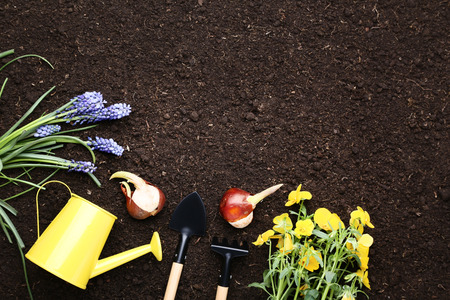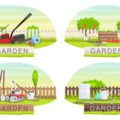1. Understanding What You Can and Can’t Compost
One of the most common mistakes people make when starting a backyard compost pile is not knowing what materials are compostable. Learning the difference between green and brown materials is key to creating healthy, balanced compost that breaks down efficiently and doesn’t attract pests or create foul odors.
Green vs. Brown Materials
Green materials are rich in nitrogen and help feed the microorganisms that break down organic matter. Brown materials are high in carbon and provide structure, helping to keep your compost from becoming too wet or smelly. A good compost pile should have a balance of both.
Common Green and Brown Materials
| Green Materials (Nitrogen-rich) | Brown Materials (Carbon-rich) |
|---|---|
| Fruit and vegetable scraps | Dried leaves |
| Coffee grounds and filters | Cardboard (shredded) |
| Grass clippings | Newspaper (non-glossy, shredded) |
| Tea bags (plastic-free) | Sawdust (from untreated wood) |
| Plant trimmings | Straw or hay |
What Not to Compost
Not everything biodegradable belongs in your compost pile. Some items can attract rodents, harbor harmful bacteria, or simply won’t break down properly at home.
Avoid Composting These Items:
- Meat, fish, and dairy products – they smell bad as they rot and attract pests.
- Greasy or oily foods – they slow down decomposition and can cause odor issues.
- Pesticide-treated plants – chemicals may harm helpful compost microbes.
- Pet waste – it may contain harmful pathogens unsafe for garden use.
- Synthetic materials – plastic, glass, and metal do not break down naturally.
A Quick Tip:
If you’re ever unsure whether something is compostable, ask yourself: “Is this natural, unprocessed, and free from chemicals?” If the answer is no, it’s best to leave it out of the pile.
Getting to know your greens and browns—and what to avoid—sets the foundation for a thriving backyard compost system. It’s all about balance!
2. Maintaining the Right Balance of Materials
One of the most common mistakes people make when composting at home is not keeping the right balance between “greens” and “browns.” Getting this mix right is key to creating rich, healthy compost and avoiding issues like bad odors or slow decomposition.
Understanding the Carbon-to-Nitrogen Ratio (C:N Ratio)
In composting terms, “browns” are materials high in carbon—like dry leaves, cardboard, or straw—while “greens” are rich in nitrogen—like fruit scraps, coffee grounds, or grass clippings. A good compost pile needs both types to break down efficiently.
The ideal carbon-to-nitrogen ratio for composting is around 30:1. That means you should aim for about 30 parts carbon to 1 part nitrogen by weight. But don’t worry—you don’t need a scale! You can use volume as a rough guide.
Easy Reference Table: Common Greens and Browns
| Greens (Nitrogen-rich) | Browns (Carbon-rich) |
|---|---|
| Vegetable scraps | Dry leaves |
| Coffee grounds | Shredded newspaper |
| Grass clippings | Sawdust (untreated wood) |
| Fruit peels | Cardboard (non-glossy) |
| Tea bags (without plastic) | Straw or hay |
Troubleshooting Imbalance Issues
If your pile smells bad:
This usually means there’s too much green material, making the pile too wet and anaerobic. Add more browns like dry leaves or shredded paper to soak up moisture and rebalance the mix.
If your pile is dry and not breaking down:
You may have added too many browns. Try mixing in more greens and a little water to get things moving again.
Tips for Keeping It Balanced
- Aim for a mix of roughly 2–3 parts browns to 1 part greens by volume.
- Chop up large items to help them break down faster.
- Keep a small bin of browns nearby so you can easily add them each time you toss in kitchen scraps.
- Turn your pile regularly to keep air flowing and materials well mixed.
Maintaining the right balance of materials helps nature do its job quicker—and keeps your backyard compost bin smelling fresh and working efficiently!
![]()
3. Proper Compost Pile Location and Setup
Picking the right spot in your backyard for your compost pile is one of the first steps to successful composting. A well-chosen location can speed up decomposition, reduce odors, and make it easier to manage your compost year-round. On the flip side, placing your compost in a poor location can lead to slow breakdown, unwanted pests, and a smelly mess.
Best Places to Put Your Compost Pile
Your compost pile needs a balance of sun, shade, moisture, and air circulation. Here are some key factors to consider when choosing the right spot:
| Ideal Condition | Why It Matters |
|---|---|
| Partial Sunlight | Helps warm up the pile and speed up decomposition without drying it out too fast. |
| Good Drainage | Prevents water from pooling at the base, which can cause soggy compost and bad smells. |
| Sheltered from Wind | Keeps materials from blowing away and helps maintain heat within the pile. |
| Close to a Water Source | Makes it easy to add water when needed to keep the pile moist. |
| Accessible Year-Round | You’ll want to reach your compost pile easily during all seasons. |
Avoid These Common Placement Mistakes
Even if you’ve got good intentions, there are some common missteps that can slow down or even ruin your composting efforts. Keep an eye out for these:
- Too Much Shade: Compost piles in deep shade may stay too cool and take longer to break down.
- Too Close to the House: While convenient, this can be risky if odors develop or pests become interested.
- Right Against a Wooden Fence: Moisture from the pile can damage wood over time and attract insects.
- No Room to Turn or Access: Make sure you have enough space around your pile to mix materials and harvest finished compost easily.
Compost Bin Setup Tips
If you’re using a bin or tumbler instead of an open pile, setup still matters. Here are a few helpful tips:
- Place on Bare Soil: This allows worms and microbes easy access to help with decomposition. If placing on concrete or patio stones, add a layer of soil or finished compost at the bottom.
- Add a Base Layer: Start with twigs or straw to help with drainage and airflow at the bottom of your bin.
- Keep It Covered: A lid or tarp helps control moisture levels and keeps animals out.
The right location and setup go a long way in making backyard composting easy and effective. By avoiding common placement mistakes and setting things up properly from the start, you’ll create an environment where organic waste breaks down efficiently into rich, usable compost.
4. Managing Moisture and Aeration
One of the most common composting mistakes backyard gardeners make is not properly managing moisture and airflow. Getting the balance right is key to a healthy, active compost pile. Too much water can lead to a soggy, smelly mess, while too little moisture will slow down decomposition.
How Moist Should Your Compost Be?
Your compost pile should feel like a wrung-out sponge—moist but not dripping wet. If it’s too dry, microbes can’t do their job breaking down organic materials. If it’s too wet, you’ll end up with anaerobic (low oxygen) conditions that produce unpleasant odors.
Moisture Management Tips:
- Check regularly: Grab a handful of compost and squeeze it. If water drips out, it’s too wet. If it falls apart like dust, it’s too dry.
- Add browns if it’s too wet: Mix in dry leaves, shredded newspaper, or cardboard to absorb excess moisture.
- Add greens or water if it’s too dry: Fresh grass clippings, fruit scraps, or a light sprinkle from the hose can help boost moisture levels.
The Importance of Aeration
Airflow is just as important as moisture. A well-aerated pile allows oxygen-loving microbes to thrive and speed up the composting process. Without enough air, your pile might start to smell and break down more slowly.
How to Keep Air Flowing:
- Turn your pile regularly: Use a pitchfork or compost aerator tool every 1–2 weeks to mix materials and introduce fresh air.
- Avoid compacting materials: Don’t overload your pile with dense items like wet grass or food scraps without mixing them with bulky brown materials.
- Layer smartly: Alternate between green (wet) and brown (dry) layers to help maintain structure and airflow.
Quick Reference: Moisture & Air Checklist
| Condition | What It Means | What To Do |
|---|---|---|
| Pile is soggy and smells bad | Too much moisture, not enough air | Add dry browns; turn the pile more often |
| Pile is dry and decomposition is slow | Lack of moisture | Add water or green materials; mix thoroughly |
| Pile looks compacted | Poor aeration | Add bulky browns; turn frequently |
By keeping an eye on both moisture and aeration, youll create the ideal environment for beneficial microbes to turn your kitchen scraps and yard waste into rich, usable compost in no time.
5. Avoiding Pests and Odors
One of the most common composting mistakes backyard gardeners make is unintentionally attracting pests or creating foul smells. But don’t worry—keeping your compost bin clean, critter-free, and odorless is easy if you follow a few simple tips.
Keep the Right Balance
Odors often happen when theres too much “green” material like food scraps and not enough “brown” material like dried leaves or paper. A good rule of thumb is to aim for a 2:1 ratio of browns to greens. This keeps your compost healthy and helps prevent it from smelling like a garbage bin.
Greens vs. Browns Cheat Sheet
| Greens (Nitrogen-rich) | Browns (Carbon-rich) |
|---|---|
| Fruit & veggie scraps | Dried leaves |
| Coffee grounds | Shredded newspaper |
| Grass clippings | Cardboard (non-glossy) |
| Tea bags (no staples) | Sawdust (untreated wood) |
Avoid Attracting Rodents and Flies
Pests like mice, rats, raccoons, and flies are drawn to certain items in your compost pile. To keep them out:
- Never add meat, dairy, oils, or cooked foods.
- Bury food scraps deep within the pile. This helps mask smells that attract pests.
- Use a secure, closed compost bin with a lid. Open piles can be an open invitation for rodents.
- Add browns on top after adding kitchen scraps. This acts like a natural cover.
Maintain Proper Moisture and Aeration
A smelly compost pile is often too wet or compacted. To avoid this:
- Mix your pile regularly. Turn it once a week to allow airflow and speed up decomposition.
- If it smells sour or rotten, add more browns. That usually means there’s too much moisture or not enough carbon material.
- If it’s too dry and slow to break down, add water or more greens.
Troubleshooting Common Compost Problems
| Problem | Cause | Fix |
|---|---|---|
| Bad smell (like rotten eggs) | Too wet / Lack of oxygen | Add browns & turn the pile more often |
| Pests in the bin | Food scraps on top / Wrong materials added | Bury scraps & avoid meat/dairy/oils |
| Pile not breaking down | Lack of moisture or nitrogen (greens) | Add water or green materials like veggie scraps or grass clippings |
By sticking to these best practices, you’ll create rich, earthy compost without the mess—or the unwanted guests!


